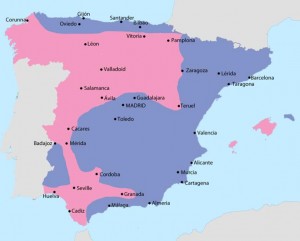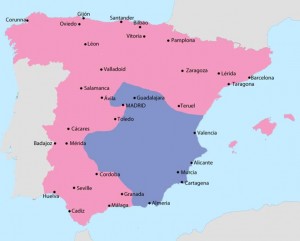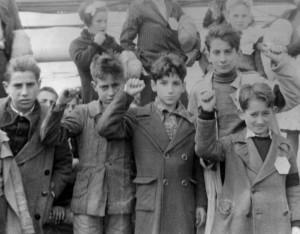The Spanish civil war is one of the most famous coups in the world and took place between July of 1936 and April of 1939. The uprising consisted of military action between the existing republican government and a nationalist faction led by a military General called Francisco Franco. The nationalist’s goal was to seize control from the republicans who were loyal to the Spanish Republic led by President Manuel Azana.
The war began after a declaration of political and military opposition from a faction of the Spanish military led by Jose Sanjurjo. Sanjurjo held the support of several conservative and monarchist groups including the Spanish Confederation of Autonomous Right, Fascist Falange, and Carlists.
In addition, several military units from neighboring countries fully supported the coup as well. Spain thus found itself deeply militarily and politically divided.
Overview
The Nationalists, led by General Francisco, launched an attack against the established government to take control of the country. The rebel group mainly consisted of people who thought that the ruling government was irrational and ill-equipped to run Spain in a justifiable manner.
Even though most of the army men were in full support of the mission, a few refused to cooperate. Those who refused had been drafted from barracks in Madrid, Barcelona, Bilbao, Valencia, and Malaga, showing that the ruling government still retained some loyalty in the face of rebellion.
Some countries, such as the Kingdom of Italy, Nazi Germany, and Portugal, were in full support of the war. Only Mexico and the Soviet Union supported the republican faction as the United Kingdom and France decided to remain neutral.
Both sides committed atrocities in an attempt to weaken their opponents. As a result, tens of thousands died and property worth plummeted. Most of the killings took place on grounds of differences in political and religious views.
By 1939, the war was coming to a close and the Republicans were slowly conceding defeat to the Nationalists. At the war’s conclusion, those linked to the repulicans were persecuted by the Nationalists. As a result, many people who stood by the existing government were forced to escape to refugee camps in Southern France. Following the fall of the Spanish Republic, Franco took power.
The Cause of the Coup
The new government was voted on in February of 1936. The incoming government had promised to introduce a host of land reforms which would alter Spain’s land utilization strategies, a policy which appeared to be beneficial for the public.
The military wing, however, was not happy with the planned changes and began planning the best course of action to resist them. As the rest of the country celebrated the concluded elections, the military was deeply worried about the oncoming reforms. Rumors of a planned military coup led the ruling government to switch out the military’s leaders in an effort to make coordination difficult.
However, this was not sufficient to prevent revolution. The plans for a military uprising continued until July 18th when war broke out.
What the military did not anticipate was the determination of the Spanish citizens who broke into the barracks and crushed the rebellion in key cities like Barcelona and Madrid.
The actions of the citizens took the battle to a whole new level altogether. The Generals realized that they could not win that easily and thus rushed back to the drawing board to come up with a new strategy. They resolved to plead for assistance from friendly countries like the Kingdom of Italy (a dictatorial regime), Germany, and Portugal, all of which supplied them with material and technical support. The Nationalist wing was fully supported by Adolf Hitler, Antonio Salazar, and Benito Mussolini.
As the battle ensued, key countries such as the U.S. and France decided to remain neutral.
By early 1939, Franco’s troops had conquered Catalonia, Tarragona, Gerona, and Barcelona. The U.K. and French governments had even formally acknowledged Franco’s regime. Madrid remained the last point of resistance.
In March of 1939, a faction led by Julian Besteiro and Segismundo Casado rose up against the ruling government and formed a military junta to negotiate a fresh peace deal. However, the Prime Minister escaped to France leaving Julian to stop an upcoming civil rebellion from his own followers. He drew a peace treaty and invited Franco to sign it to end the war. Franco refused and demanded an unconditional surrender.
On March 26th, Franco marshaled all of his military power in preparation for the Battle for Madrid. The fighting was short lived as it only took him five days to conquer and secure power in the centre of Spain.
With the government now firmly under the control of Franco and his party, many civilians who had supported the overthrown government were forced to run to neighboring states for safety as they feared reprisal from the new government.
The few who were not lucky enough to escape were arrested and prosecuted. Many were forced into labor, drying out swamps, digging canals, and building railways.
Available statistics show that some 500,000 Spanish citizens were forced to seek refuge in France where they were housed in refugee camps. It is further stated that about 5000 of them died due to the harsh conditions therein.
Franco’s rule was followed by instances of guerilla warfare and resistance attempts from people who felt discontented with the new state of government.


